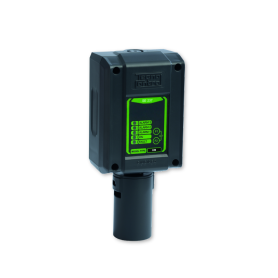A lot of chemical processes need gas detectors. One of the most common applications is related to the entrance in tanks for cleaning or maintenance. Usually in these circumstances the levels of oxygen, flammable gas vapours (usually solvents are used to clean tanks), and toxic gases need to be kept under control. A factory, for instance a factory that produces Chlorine, must make use of a Chlorine detector.
Chemical systems can produce final products or products which will be used by other factories in different processes..
GASES INVOLVED
Ammonia (NH3): it is very common in chemical systems, as a normal product or as a sub product of other processes.
Sulphur dioxide (SO2): usually present as a sub product, it is very common and toxic.

Chlorine (C1): commonly used as a component, it can also be the final product of a process.
Oxygen (O2): dangerous if exceeding, especially where it is produced. Lack of oxygen is dangerous,as well, especially during the cleaning process of tanks and tubs previously containing other substances.
Flammable gases: usually solvents for the cleaning process of the parts of the system.
Sulphured hydrogen (H2S): it is used in chemical industry in the production of sulphurs and of organic sulphured substances. It is also used as a solvent.
Toxic gases in general: depending on the considered production
EXPECTED RISKS
NH3: colourless, with an irritating, sharp smell, inflammable, toxic. Ammonia irritates the mucosa of the conjunctiva, nostrils and pharynx through a scalding action. Moreover, ammonia has a general scalding action.
SO2: in excessive quantities it may get toxic. It may affect the olfactory bulb and cause acute pains inside the nose cavities. It dilutes in wine and, if ingested in big quantity, may cause different disease, among which migraine.
C1: chlorine irritates the breathing system, mainly in children and old people. When in gas state it irritates the mucosa, and in liquid state, it causes skin burns. Chlorine odour can be smelt at a 3.5 ppm concentration.
O2: both excess and lack of oxygen may cause important diseases, sometimes death.
Inflammable gases: in smaller concentration even than LEL with regard to the volume they explode in presence of a minimum flash source resulting in often serious consequences for people and things.
H2S: colourless gas stands out for its characteristic smell of rotten eggs. A low-concentration exposure causes eye and throat irritation, cough, acceleration of breathing and fluid formation in the respiratory ways. High concentrations kill the olfactory nerve so making impossible to smell its disgusting odour, and may cause unconsciousness in few minutes.
General toxic gases: depending on their nature, they may cause various diseases, even death, even if for short exposure times or concentrations of few ppm.


